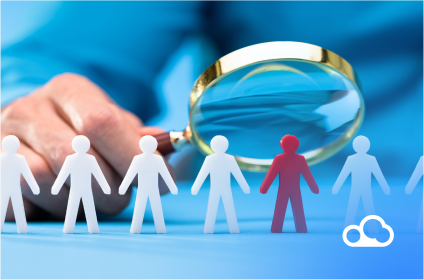Data lineage and data traceability are two essential components in data management, with each playing a pivotal role in offering valuable insights and improving data quality. Data lineage maps the journey of data from its origin, usage, and transformations, while data traceability or business lineage serves a slightly distinct purpose.
In this article, we will explore the subtleties of data lineage and data traceability, highlighting their differences and respective benefits for various departments within an organization.
Understanding Data Lineage
Data lineage refers to the process of tracking data flow over time. Technical lineage demonstrates how a piece of data moves and transforms between tables, systems, and columns, revealing the data’s origin, applied standards, and utilized policies.
The importance of data lineage lies in understanding the source and evolution of your data as it moves through its life cycle. Data lineage can also help you comprehend the final destination of data within the pipeline. Without data lineage, tracking data through business intelligence (BI) systems would be significantly more challenging.
Data lineage plays a crucial role in various aspects of data management, including data governance, data integration, and data quality management. It facilitates the identification of data sources, enhances data transparency, and helps in tracing errors back to their roots. This process ultimately leads to improved data quality, reduced risks associated with data usage, and increased trust in data-driven decision-making.
Moreover, data lineage is essential in meeting regulatory compliance requirements, such as the General Data Protection Regulation (GDPR) and the California Consumer Privacy Act (CCPA). By providing a comprehensive view of data’s journey, data lineage enables organizations to demonstrate adherence to data protection regulations and minimize the risk of non-compliance penalties.
Exploring Data Traceability
While data lineage illustrates the evolution of a data set throughout its life cycle, data traceability is responsible for monitoring access, values, and changes during that life cycle. Data traceability assesses how data adheres to its expected process flow and ensures that the information is used appropriately and ethically. Effective traceability typically involves approval of access, timestamps, and electronic signatures.
Data traceability is particularly crucial for organizations that handle sensitive information, such as financial institutions, healthcare providers, and government agencies. By tracking who accessed specific data, when it was accessed, and what changes were made, data traceability enables organizations to maintain data security, safeguard sensitive information, and ensure compliance with industry-specific regulations.
To further illustrate the purpose of data traceability, consider this scenario:
For a specific role within an organization, a traceability view is created. This view enables:
- Policy managers to assess how their security policies have impacted different data domains before policy enforcement.
- Auditors to trace data-related issues to the affected business processes and systems.
- Analysts to gain a high-level overview of where data is being used, the applied rules, and the data’s origin.
Data Lineage vs. Data Traceability: A Summary
Data lineage is the documentation of the data’s life cycle. Data traceability refers to the process of evaluating data and following its expected life cycle.Numerous data quality projects require data traceability to monitor information and ensure proper usage.
In essence, data lineage documents the life cycle of data, providing crucial insights into its origin, usage, and transformations. In contrast, data traceability evaluates data and ensures its proper usage by monitoring access, values, and changes throughout its life cycle. Both concepts are indispensable components of a robust enterprise data management program.
Conclusion: Deciphering the Importance of Data Lineage and Data Traceability
An effective data lineage and traceability solution can:
- Foster trust in technical assets by curating high-quality and reliable data.
- Enable business lines to integrate and link policies, processes, business terms, and other data elements.
By merging technical and business information, customizable business lineage views improve data traceability and enable a comprehensive understanding of data within an organization. Ultimately, this is crucial for establishing your organization’s data as a trusted and valuable asset, empowering informed decision-making and driving business growth.
In conclusion, both data lineage and data traceability are vital for a comprehensive data management strategy. By implementing these processes, organizations can enhance data quality, ensure compliance with regulations, and make better-informed decisions based on accurate and reliable data.
Ready to unravel the key differences between data lineage and data traceability?





